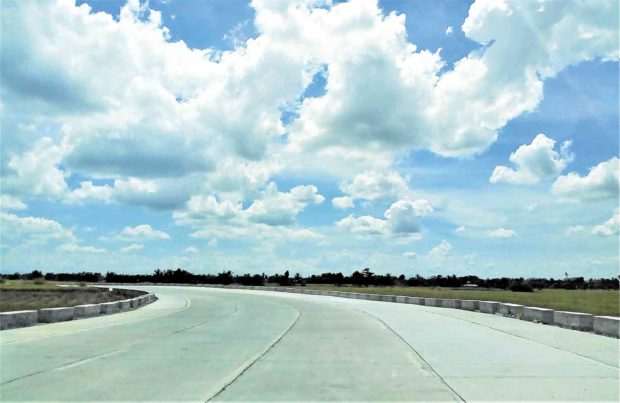
Beyond the seeming rusticity, the municipality of Alicia is slowly but surely making its way as an important economic center in the province and the Cagayan Valley region.
Situated along the Maharlika national highway, the town was carved from Angadanan Viejo town in 1949 by then President Elpidio Quirino in memory of his wife, Doña Alicia Syquia, who was killed by the Japanese during World War II.
Classified as a first income class municipality, it has 34 barangays and a land area of 154 sq km, 71 percent of which is comprised of agricultural land, and has a population of 75,000.
Located on a flat, fertile land surrounded by the Caraballo, Sierra Madre and Cordillera mountain ranges, the town of Alicia is reportedly the largest rice producer and has the largest irrigated fields in the region.
So central is rice production in the local economy that the town recently held the annual Pagay Festival, which literally means palay.
Emerging hub
But beyond its vibrant agricultural sector, Alicia is also an emerging commercial hub, being at the crossroad of the towns of Angadanan, Echague, San Isidro, San Mateo and Ramon, which comprise Isabela’s re-clustered third congressional district. And as such, the town will be the home of key national agencies who will deliver frontline service to the newly-created legislative district.
It has also the unique advantage of having the cities of Cauayan and Santiago as its northern and southern neighbors, respectively, and benefits on the economic activities of the two urban centers.
But the town isn’t simply banking on the “location, location, location” mantra of real estate development. In the recent State Of the Municipality Address, Mayor Joel Amos Alejandro said he will continue to strengthen the town’s position as a center for trade, commerce, education and agriculture.
In his first public address as local chief executive, he declared that he will pursue more infrastructure and road projects to facilitate the transport of farm produce into the market.
He noted that the improvement of public market will be a priority to help the micro, small and medium enterprises and spur the growth of Alicia’s economy, and those of the adjoining towns.
Alejandro said that they are looking for residential projects for the poor in partnership with Gawad Kalinga and other socialized housing developers.
A recipient of the prestigious Seal of Good Local Governance from 2016 to the present, Alicia posted a P129-million aggregate local-sourced revenues and Internal Revenue Allotment (IRA) from the national coffers.
With a business-friendly investment code and a comprehensive land use plan which the Sangguniang Bayan updates periodically, it aims to hit the P100-million local income mark in the mid-term in order to be eligible for cityhood.
The municipality is also eyeing the construction of a satellite government center which will house national and local agencies, and multi-purpose facilities at an interior barangay adjacent to the San Mateo road, which is emerging as the new commercial corridor.
If it is any sign of gentrification, Alicia boasts of a Robinson’s Supermarket and a Jollibee full-service restaurant, with other popular supermarket and food franchises knocking on its doors, and may open next year. Post-harvest facilities, gas station and automotive parts are growing enterprises with the volume of vehicles coming from the neighboring towns.
A 5.27-km, P180-million bypass road, was opened last September, and an additional 1.7-km road and bridge will be built next year to divert the vehicles from passing through the congested junctions.
Tourism
On the tourism front, it has two economy hotels, several home-grown food and beverage establishments, and a couple of inland resorts catering domestically to the province.
With its agrarian character suitable for leisure and education, the town packs great potential in farm tourism which the government is actively pushing.
An iconic attraction which lures pilgrims is the Our Lady of Atocha Church which has been declared by the government as a national religious tourist destination. The architectural landmark forms part of the spine of Spanish-era churches in the Cagayan Valley region which hopes to cash in on the emerging faith tourism section of the industry.
As an educational center, it is home to the Northeast Luzon Adventist College, the Philippine Normal University-Northern Luzon Campus, and the Top Achievers Private School, whose student population keeps the local retail economy vibrant.
A memorable quote from Alice in Wonderland says: “It takes all the running you can do, to keep in the same place. If you want to get somewhere else, you must run at least twice as fast as that.”
Just like this quote, Alicia is running twice as fast in good governance, business, and property development to be the next wonderland in the north.